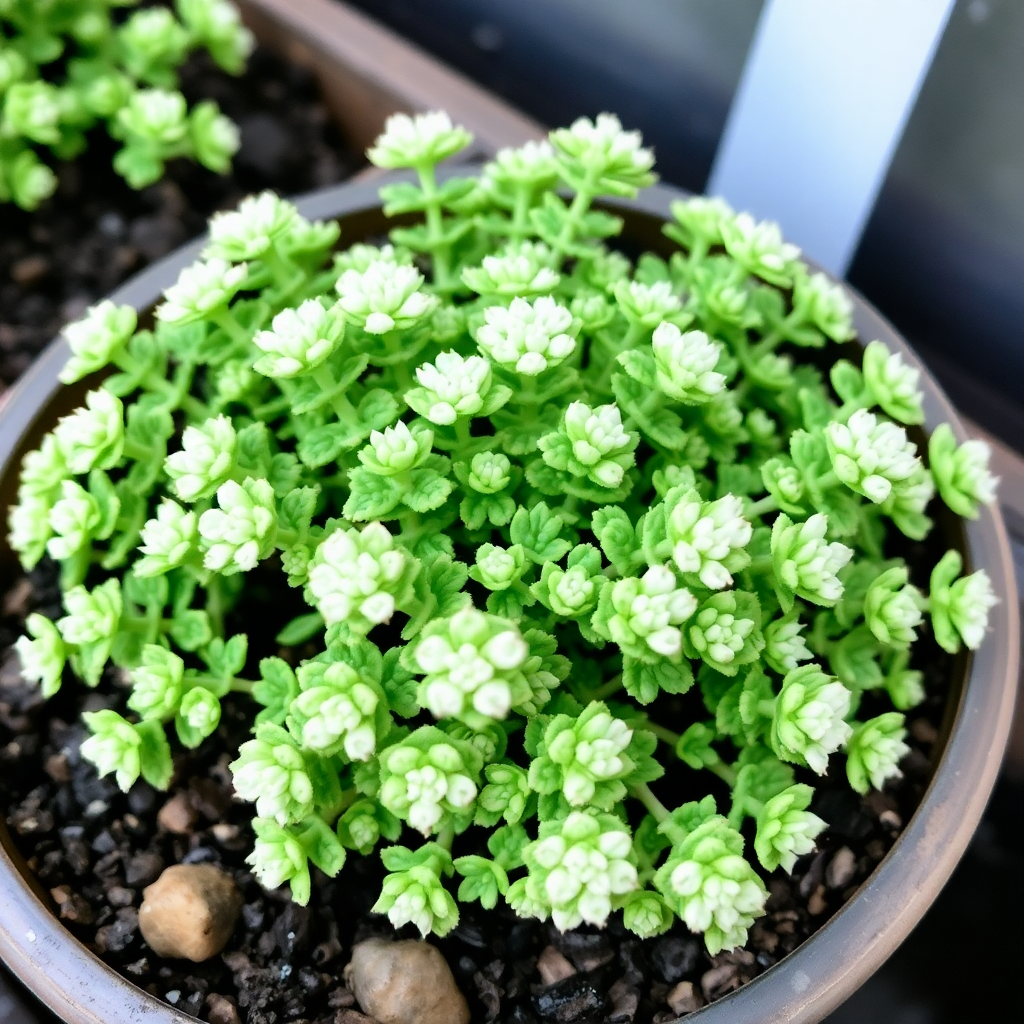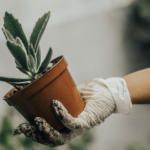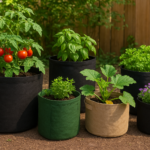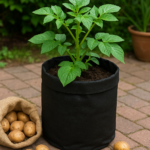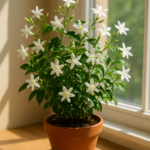Sedum plants, also known as stonecrops, are hardy, low-maintenance succulents that thrive in various climates. With their thick, fleshy leaves and vibrant blooms, they add beauty and resilience to any garden. These drought-tolerant plants are perfect for rock gardens, borders, and even green roofs, as they require minimal care while offering year-round interest.
One of the biggest advantages of sedums is their adaptability. They can grow in poor soil, require little watering, and withstand harsh weather conditions. Whether you want a creeping ground cover or an upright, showy succulent, there’s a sedum variety for you.
Beyond their beauty, sedum plants attract pollinators like bees and butterflies, making them a great choice for eco-friendly gardening. They are also pest-resistant and rarely suffer from diseases. If you’re looking for a hassle-free plant that thrives with little effort, sedum is an excellent choice. In this guide, we’ll explore everything you need to know about growing and caring for these stunning succulents.
Overview of Sedum Plants

Sedum plants, commonly known as stonecrops, belong to the Crassulaceae family and include over 400 species of succulents. They are known for their thick, water-storing leaves, which help them survive in dry and rocky conditions. Sedums come in two main types: low-growing varieties that spread as ground cover and taller, upright types that produce clusters of colorful flowers.
These plants thrive in poor soil, require minimal watering, and are highly resistant to pests and diseases. Their adaptability makes them perfect for gardens, containers, rock gardens, and even rooftop landscapes. Some varieties bloom in late summer or fall, adding seasonal color to your garden.
Sedums are also beneficial for pollinators, attracting bees and butterflies. With their low-maintenance nature and striking appearance, they are a favorite among beginner and experienced gardeners alike. Whether used for erosion control, decoration, or sustainability, sedum plants are a versatile and rewarding addition to any landscape.
Types of Sedum Plants
Sedum plants come in a wide range of varieties, each with unique characteristics. They can be broadly categorized into two types: low-growing sedums (which spread as ground cover) and upright sedums (which grow tall and produce large flower clusters). Here are some popular sedum varieties:
1. Sedum spurium (Caucasian Stonecrop)
This low-growing sedum features small, fleshy leaves that turn reddish in cool weather. It spreads quickly, making it an excellent ground cover. It produces pink or red flowers in summer, attracting pollinators.
2. Sedum Album (White Stonecrop)
A hardy, drought-tolerant variety with tiny white flowers, this sedum forms dense mats and thrives in rocky or sandy soil. It is often used for green roofs and erosion control.
3. Sedum Acre (Goldmoss Stonecrop)
This fast-spreading sedum has bright yellow star-shaped flowers. It is extremely drought-resistant and ideal for covering bare patches in gardens.
Why Choose Sedum Plants for Your Garden?

Sedum plants are an excellent choice for gardeners of all experience levels due to their hardiness, versatility, and low-maintenance nature. Here’s why you should consider adding them to your garden:
1. Drought Tolerance
Sedums store water in their thick leaves, allowing them to survive long periods without rainfall. This makes them perfect for dry or low-water gardens.
2. Low Maintenance
Unlike many other plants, sedums require minimal care. They thrive in poor soil, rarely need fertilizing, and are resistant to pests and diseases.
3. Year-Round Interest
With their attractive foliage and colorful flowers, sedums provide visual appeal in every season. Some varieties even change color with the weather.
4. Pollinator-Friendly
Sedum flowers attract bees, butterflies, and other beneficial insects, promoting a healthier ecosystem in your garden.
5. Great for Ground Cover and Erosion Control
Low-growing sedums spread quickly, preventing soil erosion and filling empty spaces beautifully.
How to Plant Sedum
Planting sedum is simple and requires little effort. Follow these steps to ensure healthy growth:
1. Choose the Right Location
- Sedum thrives in full sun, so select a spot that gets at least 6 hours of sunlight daily.
- It can tolerate partial shade but may become leggy.
2. Prepare the Soil
- Sedums prefer well-draining, sandy, or rocky soil.
- Avoid heavy clay soil, which can cause root rot.
- If needed, mix sand or gravel into the soil to improve drainage.
3. Planting Sedum
- Dig a shallow hole slightly larger than the root ball.
- Place the plant in the hole and gently cover the roots with soil.
- Space plants 8–12 inches apart to allow spreading.
4. Watering After Planting
- Water lightly after planting to help roots establish.
- Once established, sedum requires minimal watering.
5. Mulching (Optional)
- A thin layer of gravel or small rocks helps retain heat and moisture.
Sedum Care: Watering and Maintenance
Sedum plants are incredibly low-maintenance, but proper care ensures they thrive and stay vibrant. Here’s what you need to know:
1. Watering Sedum
- Minimal Watering: Sedums are drought-tolerant and need little water. Overwatering can cause root rot.
- Watering Frequency: Water once every 10–14 days in dry conditions. In humid climates, natural rainfall is often enough.
- Newly Planted Sedums: Water lightly until roots establish, then reduce watering.
2. Fertilizing
- Sedums rarely need fertilizer. If growth is slow, apply a diluted, balanced fertilizer once in spring.
- Too much fertilizer can cause weak, leggy growth.
3. Pruning and Trimming
- Trim dead or overgrown stems in early spring to promote fresh growth.
- Remove spent flowers from upright sedums to encourage more blooms.
4. Managing Pests and Diseases
- Sedums are naturally pest-resistant, but aphids or mealybugs may appear. Use insecticidal soap if needed.
- Prevent fungal issues by ensuring good airflow and avoiding excessive moisture.
Propagating Sedum Plants
Sedum plants are easy to propagate, making them perfect for expanding your garden or sharing with friends. Here are the best propagation methods:
1. Propagating from Leaf Cuttings
- Gently remove a healthy leaf from the plant.
- Let the leaf dry for 1–2 days to form a callus.
- Place it on well-draining soil without burying it.
- Mist lightly every few days. In a few weeks, roots and new growth will appear.
2. Propagating from Stem Cuttings
- Cut a 3–6 inch stem from a healthy sedum plant.
- Allow the cutting to dry for a day before planting.
- Insert it into well-draining soil and water sparingly.
- Roots should develop within 2–3 weeks.
3. Propagating by Division
- Carefully dig up a mature sedum plant.
- Gently separate the root clumps into smaller sections.
- Replant in prepared soil and water lightly.
Sedum in Containers: Indoor and Outdoor Planting

Sedum plants thrive in containers, offering flexibility for both indoor and outdoor gardens. Here’s how to grow them successfully in pots:
1. Choosing the Right Container
- Select a well-draining container with drainage holes. Sedums dislike sitting in waterlogged soil, which can lead to root rot.
- Containers can range from small pots to larger decorative planters, depending on the size and variety of sedum.
2. Soil for Containers
- Use cactus or succulent potting mix for best results. If needed, mix in some sand or gravel for improved drainage.
- Avoid regular potting soil, as it holds too much moisture.
3. Outdoor Container Care
- For outdoor planting, place containers in a sunny spot. Sedums need at least 6 hours of sunlight a day.
- In hot climates, ensure the container is not exposed to intense afternoon sun, which can dry out the soil.
- Water sparingly, allowing the soil to dry out between waterings.
4. Indoor Container Care
- For indoor sedums, choose a bright, sunny window that receives lots of indirect light.
- Keep the temperature moderate, and avoid placing them near drafty windows or air conditioners.
- Indoor sedums still need minimal watering, so allow the soil to dry completely between waterings.
Sedum Plant Benefits
Sedum plants offer numerous benefits, making them a valuable addition to any garden or home. Here are some of the top advantages of growing sedum:
1. Low Maintenance
Sedums are incredibly easy to care for, requiring minimal watering, fertilizing, and attention. Their hardy nature makes them perfect for busy gardeners or beginners.
2. Drought Resistance
With their water-storing leaves, sedums are highly drought-tolerant, making them ideal for dry landscapes and water-conscious gardening.
3. Erosion Control
Sedum’s spreading habit makes it an excellent ground cover, helping prevent soil erosion in areas with slopes or poor soil.
4. Attractive to Pollinators
Sedum flowers, especially in varieties like autumn joy, attract bees, butterflies, and other beneficial insects, enhancing biodiversity in your garden.
5. Versatility
Sedum plants can thrive in various conditions, including poor soil and full sun. They are perfect for rock gardens, containers, and green roofs.
6. Aesthetic Appeal
With their unique, fleshy leaves and colorful flowers, sedums add year-round interest to your garden. Some varieties even change color with the seasons, offering dynamic beauty.
7. Health Benefits
Some sedum species have been used in traditional medicine for their anti-inflammatory and antimicrobial properties.
Common Problems and Solutions
While sedum plants are generally low-maintenance, they can face a few common issues. Here’s how to tackle them:
1. Overwatering and Root Rot
- Problem: Overwatering is the most common problem with sedums, leading to root rot. The plant’s roots can’t handle constant moisture and start to decay, which can cause the plant to die.
- Solution: Ensure your pot has proper drainage holes. Water sedums sparingly and allow the soil to dry out completely between waterings. If you notice yellowing or wilting leaves, check the roots for rot, and cut away any affected parts.
2. Frost Damage
- Problem: Sedum plants are generally hardy, but extreme winter cold can cause damage. Frost can kill or damage the plant, especially in regions with heavy snowfall or freezing temperatures.
- Solution: In colder climates, mulch around the base of the plants to provide insulation and protect roots from freezing. For container-grown sedums, bring them indoors during winter or move them to a sheltered spot. Hardy varieties can tolerate light frost, but severe conditions may require additional protection, like covering the plants with burlap during cold snaps.
Seasonal Care for Sedum Plants
Sedum plants are adaptable to various climates, but seasonal care is essential to ensure their health and longevity. Here’s how to care for sedum throughout the year:
1. Spring Care
- Pruning: In early spring, cut back dead or damaged stems to encourage fresh growth.
- Replanting: If needed, divide mature plants to propagate new ones.
- Watering: Start watering regularly, but ensure the soil dries out between waterings to avoid overwatering.
- Fertilizing: Apply a light dose of fertilizer to encourage healthy growth.
2. Summer Care
- Sun Exposure: Ensure sedum plants are getting at least 6 hours of sunlight each day.
- Watering: Water sparingly, allowing the soil to dry completely between waterings. Sedums are drought-tolerant and don’t need frequent irrigation.
- Deadheading: Remove spent flowers to encourage more blooms and maintain a tidy appearance.
3. Fall Care
- Cutting Back: After blooming, cut back the dead flower heads to prevent the plant from becoming too leggy.
- Watering: Continue to water sparingly, but reduce watering as temperatures cool down.
- Protecting from Frost: In areas with frost, apply a layer of mulch around the base of the plant to protect it from freezing.
4. Winter Care
- Indoor Care: For container-grown sedums, move them to a cool, dry location indoors during severe winter weather.
- Mulching: Add extra mulch to protect roots from freezing if sedum is planted outdoors.
- Minimal Watering: Sedums require little water in winter. Only water if the soil is arid.
Frequently Asked Questions
1. How often should I water my sedum plants?
Sedum plants are drought-tolerant and require minimal watering. Water once every 10–14 days, ensuring the soil dries out completely between waterings. Avoid overwatering, as it can lead to root rot.
2. Can sedum plants survive in the shade?
While sedums thrive in full sunlight, some varieties can tolerate partial shade. However, they may become leggy and produce fewer flowers in shadier conditions. For best results, plant them in a sunny spot.
3. How do I propagate sedum plants?
Sedum can be propagated through leaf cuttings, stem cuttings, or division. Simply cut a healthy leaf or stem, let it dry for a few days, then place it on soil to root. Alternatively, divide mature plants into smaller sections and replant them.
4. Are sedum plants resistant to pests?
Yes, sedums are naturally resistant to pests like aphids and mealybugs. However, occasional pests may appear. Use insecticidal soap or neem oil to treat any infestations.
5. Can sedums survive in cold winters?
Most sedum varieties are cold-hardy and can survive in winter. Protect them by adding mulch around the base, and if they’re in containers, move them to a sheltered area or indoors to avoid frost damage.
Conclusion
Sedum plants are a fantastic addition to any garden or indoor space due to their beauty, resilience, and low-maintenance care. Whether you’re looking for a vibrant ground cover, a striking container plant, or a drought-resistant option, sedums offer versatility and year-round appeal. Their ability to thrive in various conditions makes them a perfect choice for both beginners and seasoned gardeners. Embrace the charm of sedums and add these hardy beauties to your collection today!

